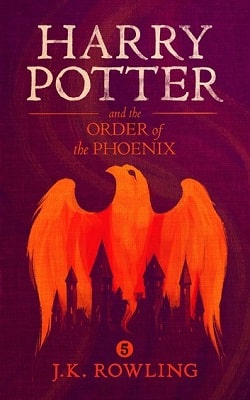“Enzo asked me to show him all the most beautiful sights in the city,” Fiore explained.
The corner of her lips arose alongside her left brow. “And so you showed him yourself?”
Fiore shrugged with a smile that begged to be kissed. “I wanted to show him the best artwork. The fact that the best artisans have exquisite taste in models? Pure coincidence.”
“Of course.” Her sly gaze flicked between them both. Then she jerked a ruddy thumb toward the back of the studio. “If you require me further, I’ll be over there.”
Enzo followed the gesture and found at its terminus the beginnings of a grand creation in clay. Even in its half-formed state Enzo recognized the two sinewy figures as Phaethon and Cycnus. Phaethon had tumbled to earth from the sun’s chariot and now lay cradled in mourning Cycnus’s arms, swan-feathers already forming on the latter’s limbs.
Beside him, Fiore let out a low appreciative whistle. “For yourself or for a patron?”
“For a patron,” Artemisia replied. She answered Enzo’s enquiring gaze with, “A centerpiece for a garden. This is just a mock-up for their approval before I go to their site to carve the final vision. Clay is easier to reshape than stone.”
“And carving on-site easier than transporting the finished piece,” Enzo concluded.
Artemisia smiled in what might have been either sincerity or condescension; Enzo couldn’t quite read her. “Exactly so.”
And with that, she bowed and withdrew to her work-in-progress.
Enzo’s gaze followed her for a moment. Another time he might have remained to watch her work; the process of molding the formless clay into something not just recognizable but startlingly lifelike fascinated him.
But his true fascination lay in his companion, and so his eye returned as it ever did to Fiore.
He found, to his surprise, that Fiore had become quite industrious in the scant few moments Enzo had let him out of his sight. A zibaldone had emerged for him to scribble in with devoted passion.
When Enzo’s enquiring glance caught his eye, he smiled and, after a few more strokes of his red chalk, ceased. Then he turned the zibaldone around so Enzo could survey its pages. He beheld a rough sketch of Artemisia’s work-in-progress—though to call it “rough” did it no justice. In but a few shakes of a sail Fiore had succeeded in capturing the essence of not just the half-formed sculpture but also its creator, rendering her posture and expression in such a way as to give one the feeling of her quizzical presence.
“Remarkable,” Enzo heard himself say again.
Fiore snapped the zibaldone shut and pocketed it with a careless shrug. “Hardly.”
Enzo supposed they could let the argument rest there for the time being. He’d caught the ghost of a secretive smile on Fiore’s perfect lips which he thought meant the compliment had pleased him despite his modesty.
Fiore bid his friend good-day and led Enzo out of her studio. After a brief pause on the threshold of a woodcarver in the midst of chiseling a unicorn for a ship’s figure-head, he led Enzo off the sculptor’s island altogether.
They crossed a bridge over a narrow canal to reach the island of painters. A mural aedicula marked this entrance, ensconced in protective pillars and a roof to defend both the painting and its illuminating oil lamp from winter sleet. It depicted Bellenos arising from the seafoam whilst painting the ocean into being around him. Despite existing on a flat plane as opposed to the tactile dimensions of sculpture, the artist had layered the elements to create the illusion of incredible depth, so that the realm behind Bellenos seemed to stretch on as infinite as the actual sea.
Fiore led him onward. Past workshops marked with murals advertising quite plainly the talent of the painters toiling within. Past clusters of artists gawking and scribbling. Past other aristocrats wandering side-by-side in masks identical to his own, save they shone white where his remained shadowed black, bending their pale false faces together to whisper as they went by. Yet Fiore heeded them not, and so Enzo followed his example.
“Here we are,” Fiore announced.
Enzo, startled out of his silent admiration, realized they’d arrived at a painter’s studio. Fiore trotted in as if he lived there. Enzo ducked in after him.
Rather than figural works or portraiture, Enzo found himself surrounded by landscapes. Not, however, the city- and seascapes of Halcyon. Rather, they represented scenery never found within the lagoon or its islands. A series of pastoral capricci; fantastical landscapes whose exact counterparts did not exist in nature, yet evoked the natural realm all the same, creating something that sang more true to the spirit than mere reality.
Fiore glanced about the studio and tossed a careless wave at a man standing before an easel in the corner—the creator of all this work. The painter returned the gesture along with a puzzled glance at Enzo. Enzo touched the brim of his hat with a nod. This seemed to free the painter from whatever social obligation he might have felt and allowed him to return to his trade. His apprentice, on the other hand, ceased sweeping altogether to stare wide-eyed at the black bauta and his capricious companion. Fiore, of course, took no notice of any attention he attracted and instead fervently gestured for Enzo to join him in admiring a particular painting.
The first capriccio Fiore selected for Enzo’s perusal depicted a picnic in a sylvan glade beside a babbling brook. Two gentlemen in roguish garb sat with two nude and voluptuous women. The women cast adoring looks at the gentlemen, but the gentlemen, laughing with ample conviviality, looked only at each other.
“Men of our sort, I should think,” Fiore observed.
A low laugh escaped Enzo’s throat.
The rest of the studio’s gallery offered up similar scenes. Fiore led Enzo through them, pausing now and again with a cheeky half-smile to point out smaller details. Then he halted his dancing gait in front of a particular painting. He clasped his hands behind his back and trained his eye in reverent silence.
Enzo, following him, recognized the inspiration for this piece in the wooded hills and vales surrounding his sister’s hunting lodge. The artist had added in a crumbling ruin with a half-tumbled tower whose arches and staircase led to nowhere, overgrown not just with moss, ferns, and ivy, but with a stout oak growing within its torn walls, its roots and branches alike breaking through the stone. Rather than standard human staffage, the artist had inserted capering fauns amongst the foliage and ruin. And indeed, the fauns looked very familiar to Enzo.
“Did you model for these, as well?” he asked, turning to Fiore with a smile.















